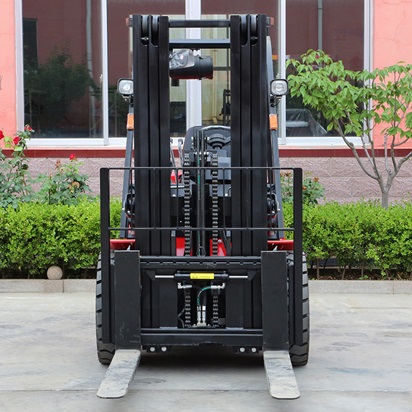First we need to know the structure of the forklift mast
The forklift mast lifting system mainly consists of hydraulic cylinders, guide mechanisms, support mechanisms, auxiliary devices, etc. Among them, the hydraulic cylinder is the driving force for the mast to rise and fall, and the guide mechanism and support mechanism are the basis for ensuring the smooth rise and fall of the mast. Auxiliary devices include limit switches, safety hooks, etc. to ensure the safety of mast operation.
The hydraulic cylinder adopts single-acting or double-acting type. The single-acting type can only complete the lowering of the mast, while the double-acting type can realize the raising and lowering of the mast. The way the mast is fixed relative to the fuselage is divided into single-column mast and double-column mast, and there are also obvious differences in structure.
Therefore, the lifting principle of the forklift mast is:
The up and down movement of the forklift mast is powered by a hydraulic system and achieved through mechanical transmission. The hydraulic system is composed of oil tanks, pumps, valves, hydraulic cylinders, etc. The work of the oil pump is controlled through the control handle or foot pedal on the operating platform, so that the oil enters the hydraulic cylinder, thereby completing the rise and fall of the mast.
In a hydraulic system, the oil pump plays the role of sucking oil out of the tank and into the hydraulic cylinder. The oil pump is connected to the engine through a transmission belt. As the engine runs, the oil pump continuously sends oil into the hydraulic cylinder to complete the lifting of the mast. When the mast is lowered, the operator controls the valve to return the oil in the hydraulic cylinder to the tank, and the mast will drop.
Proper use of the mast will make the forklift work more efficiently.








